What are Different Types of Lifeboats and How to Select the Right Type
Life boats, which are essential components of maritime safety equipment, are critical assets in ensuring the safety of people at sea during emergencies. Various types of lifeboats have been developed over the years to meet various maritime needs, providing diverse solutions for evacuating and safeguarding crew and passengers. In this article, we’ll explore the different types of lifeboats, their designs, their specific applications in maritime safety and key factors to select the most suitable lifeboat.
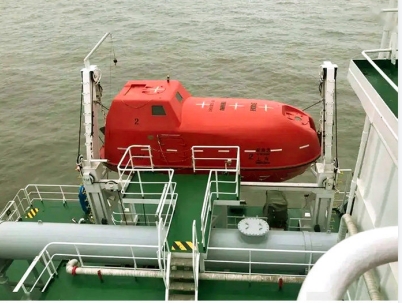
Common Types of Lifeboats
1. Open Lifeboats
Open lifeboats are simple, traditional designs that have been in use for many years. These boats are typically constructed of wood or, more commonly nowadays, long-lasting materials such as fiberglass or reinforced plastic. They feature a basic, open design without a roof, making them suitable for quick and easy boarding. Open lifeboats are commonly found on smaller vessels and are manually propelled using oars or a small outboard motor.
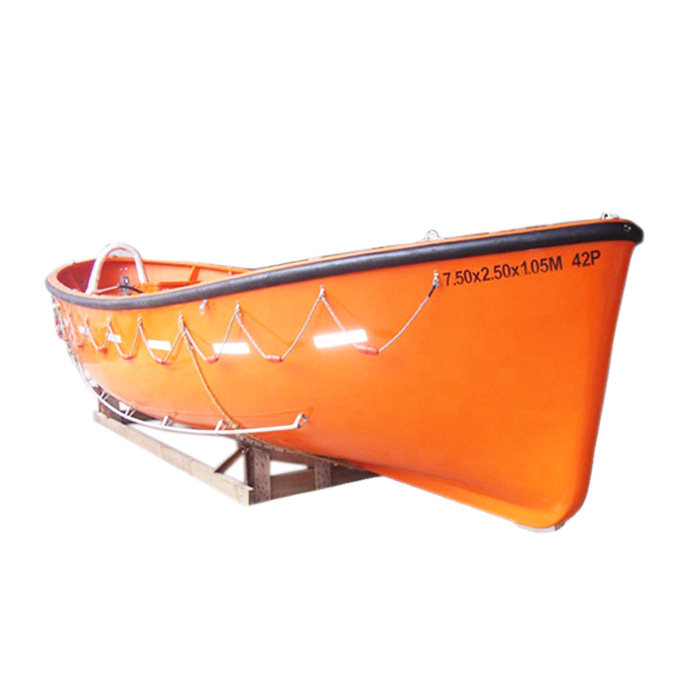
2. Enclosed Lifeboats
Enclosed lifeboats are built with a protective canopy or roof to protect the occupants from the elements. This design offers additional protection against inclement weather, such as rain, wind, and rough seas. Enclosed lifeboats are frequently outfitted with vital survival equipment, communication systems, and emergency supplies. These lifeboats are appropriate for a variety of vessels, such as cargo ships, passenger ships, and offshore platforms.
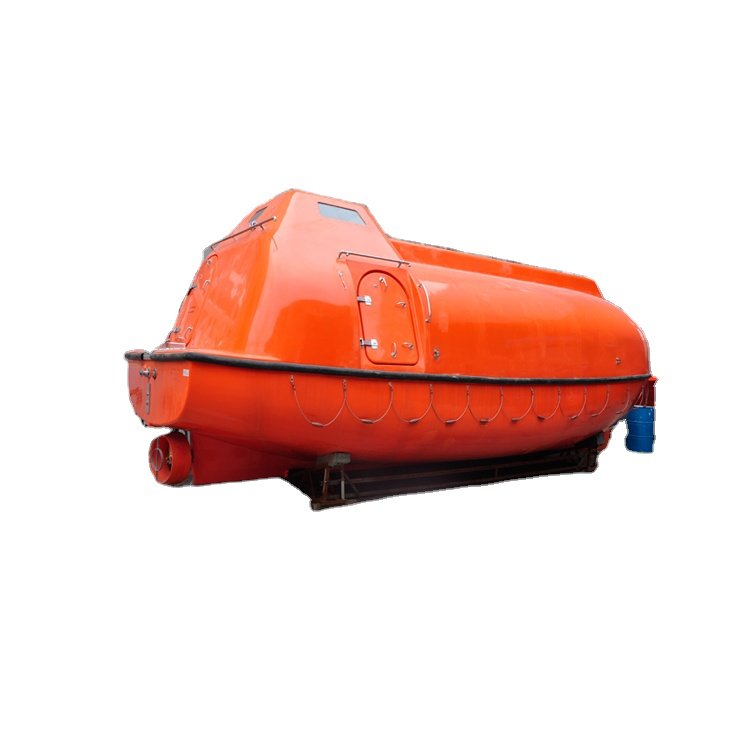
3. Freefall Lifeboats
In an emergency, freefall lifeboats are specifically designed for rapid deployment from a ship’s deck. Freefall lifeboats, unlike traditional lifeboats, are launched by releasing them from a cradle or ramp at an elevated position on the ship. The lifeboat’s freefall descent allows it to enter the water quickly and efficiently, ensuring a timely evacuation in critical situations.
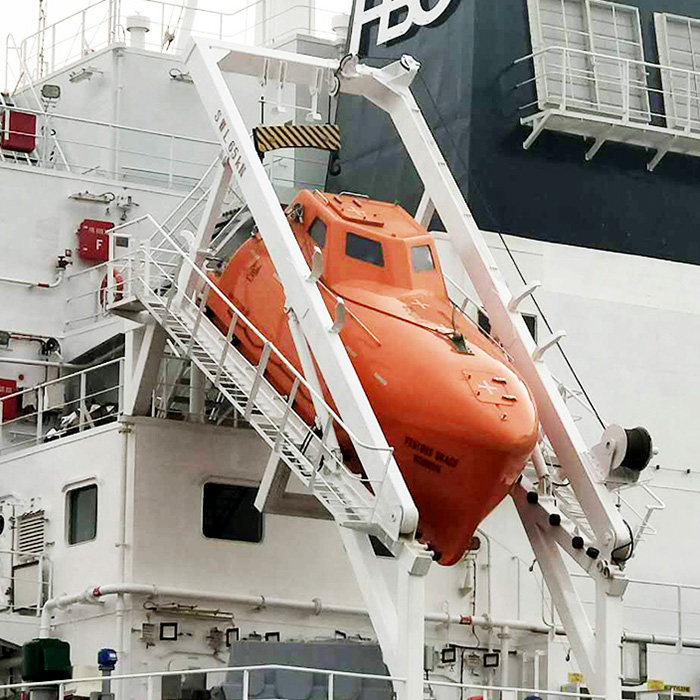
4. Fast Rescue Craft
Fast rescue craft (FRCs) are smaller, agile vessels used for rapid response and rescue operations. These boats are frequently found on larger vessels like passenger ferries, cruise ships, and offshore installations. Fast rescue craft are designed for quick maneuverability and can quickly reach locations to assist in emergencies or rescue missions.
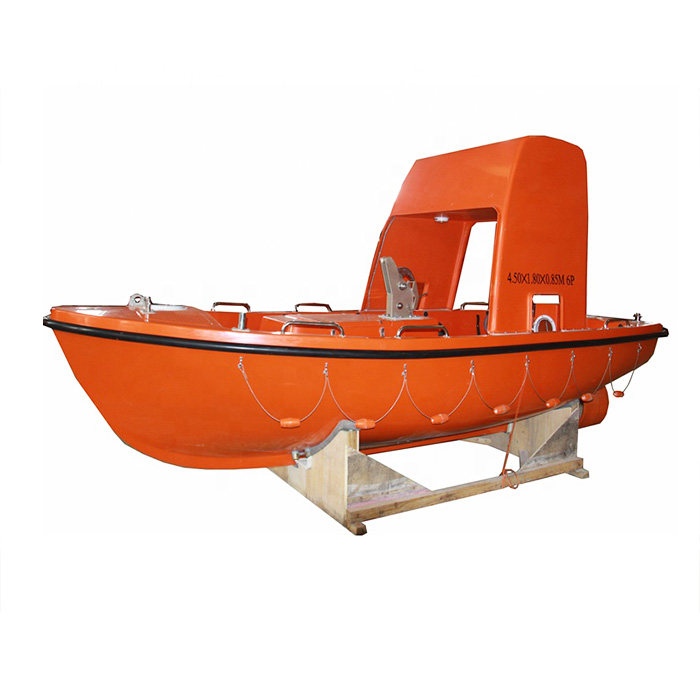
5. Davit-Launched Lifeboats
Davit-launched lifeboats are commonly used on ships and offshore platforms of various sizes. Davits, which are mechanical devices that lower the lifeboat from a ship’s deck to the water, are used to launch them. These lifeboats can be open or enclosed, making them a versatile solution for a variety of vessel types. Davit-launched lifeboats are well-known for their dependability and ease of use.
6. Inflatable Lifeboats
Inflatable lifeboats have inflatable tubes wrapped around the hull to provide buoyancy and stability. Because these lifeboats are lightweight, they are simple to store and deploy. Smaller vessels, such as yachts and offshore installations, frequently use inflatable lifeboats. They can be open or enclosed, providing design flexibility.
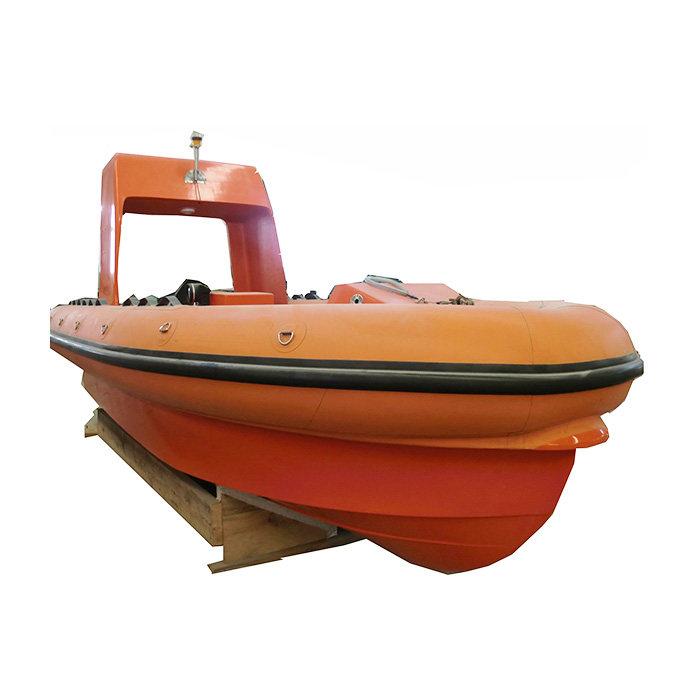
7. Combination Lifeboats
Combination lifeboats combine features from various types to provide a complete solution. A combination lifeboat, for example, may have an enclosed design with inflatable elements for added buoyancy. These lifeboats aim to combine the benefits of various designs in order to improve safety and versatility.
Key Considerations to Select the Most Appropriate Type of Lifeboats
Choosing the best type of lifeboat is a critical decision for ensuring the safety of people at sea.
- Vessel Type and Size
Consider the size and type of the vessel. Larger vessels may require lifeboats with greater capacity and additional features. Passenger ships, cargo vessels, and offshore platforms may have different requirements based on their specific operations.
- Occupancy Capacity
Evaluate the maximum number of people the lifeboat needs to accommodate. Lifeboats come in various sizes, and it’s crucial to choose one that can safely carry all individuals on board in emergency situations.
- Operational Environment
Assess the typical operating conditions and environmental factors where the vessel operates. Different lifeboats are designed to withstand specific sea conditions. For instance, vessels navigating in rough seas may require more robust lifeboats with enhanced stability features.
- Launch and Recovery Method
Consider the method of launching and recovering the lifeboat. Davit-launched lifeboats are common on many vessels, while freefall lifeboats are designed for rapid deployment. The choice depends on the vessel’s layout and the speed at which evacuation is required.
- Survivability Features
Evaluate the survivability features of the lifeboat, such as its stability, self-righting capabilities, and ability to withstand extreme weather conditions. The lifeboat should be capable of keeping occupants safe and secure in a variety of emergency situations.
- Accessibility and Ease of Boarding
Consider how easy it is to board the lifeboat, especially in difficult conditions. Some lifeboats are built with quick and easy boarding in mind, which is critical during emergency evacuations. Consider accessibility features such as ladders or platforms.
- Special Requirements
Based on the vessel’s operations, determine any special requirements or features that are required. Offshore drilling vessels, for example, may benefit from freefall lifeboats for rapid evacuation, whereas vessels transporting hazardous materials may require lifeboats with additional safety measures.
- Regulatory Compliance
Ensure that the selected lifeboat complies with international and national regulations and standards. Different regions may have specific requirements for lifeboat design, equipment, and maintenance. Compliance with regulations ensures that the lifeboat meets recognized safety standards.
- Training and Familiarization
Consider the training requirements for operating the selected lifeboat. Crew members should be adequately trained in the proper use of the lifeboat, including launching, navigation, and emergency procedures. Familiarity with the lifeboat’s features is crucial for efficient and safe operation during emergencies.
- Maintenance and Inspection
Assess the ease of maintenance and inspection for the chosen lifeboat. Regular maintenance is essential for ensuring that the lifeboat remains in optimal condition. Easy access for inspections and routine maintenance tasks contributes to the lifeboat’s reliability.
- Cost Considerations
While safety is the most important consideration, consider the overall cost of acquiring and maintaining the lifeboat. Determine the lifecycle costs of the lifeboat, including purchase, installation, training, and ongoing maintenance. Balance budgetary concerns with the need for a dependable and efficient lifeboat.
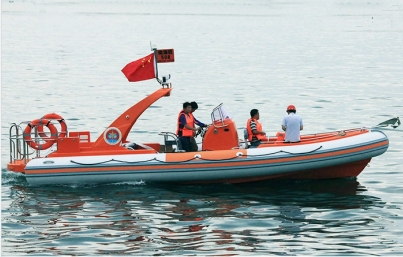
Conclusion
The diversity of lifeboat designs reflects the evolving needs and challenges of maritime safety. Each type of lifeboat serves a specific purpose, such as quick evacuation, sheltering occupants from the elements, or allowing for rapid rescue operations. Choosing the right type of lifeboat requires a thorough examination of the vessel’s characteristics, operational environment, and safety requirements. By carefully considering these factors, vessel operators can ensure that the selected lifeboat is well-suited to handle emergency situations, serving as a critical component in maritime safety and evacuation procedures.


